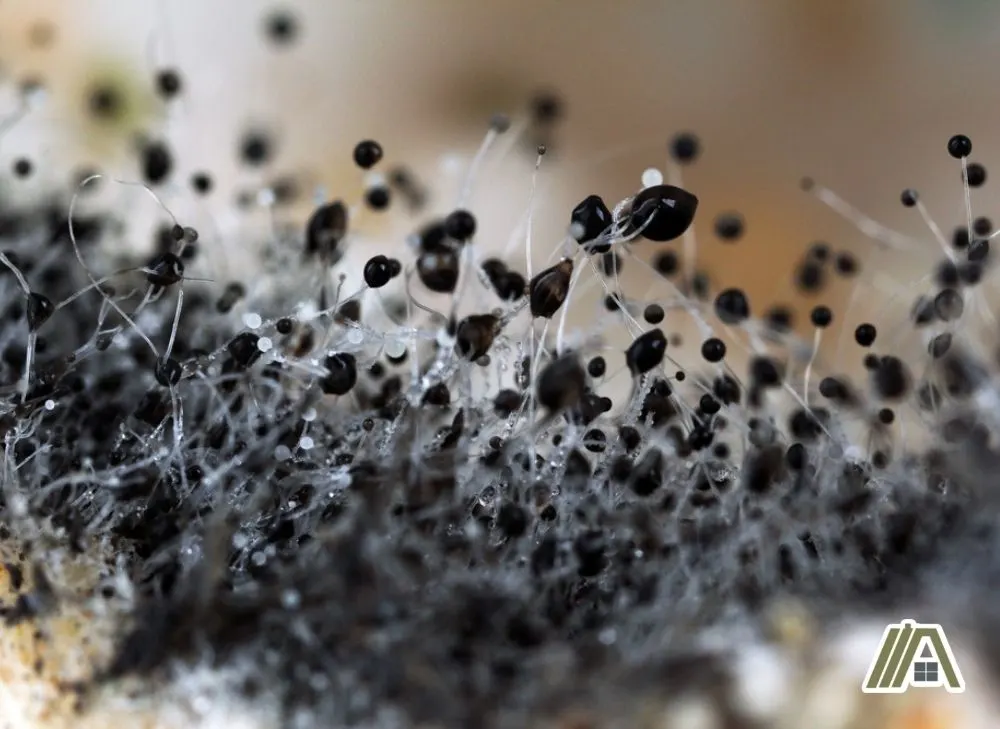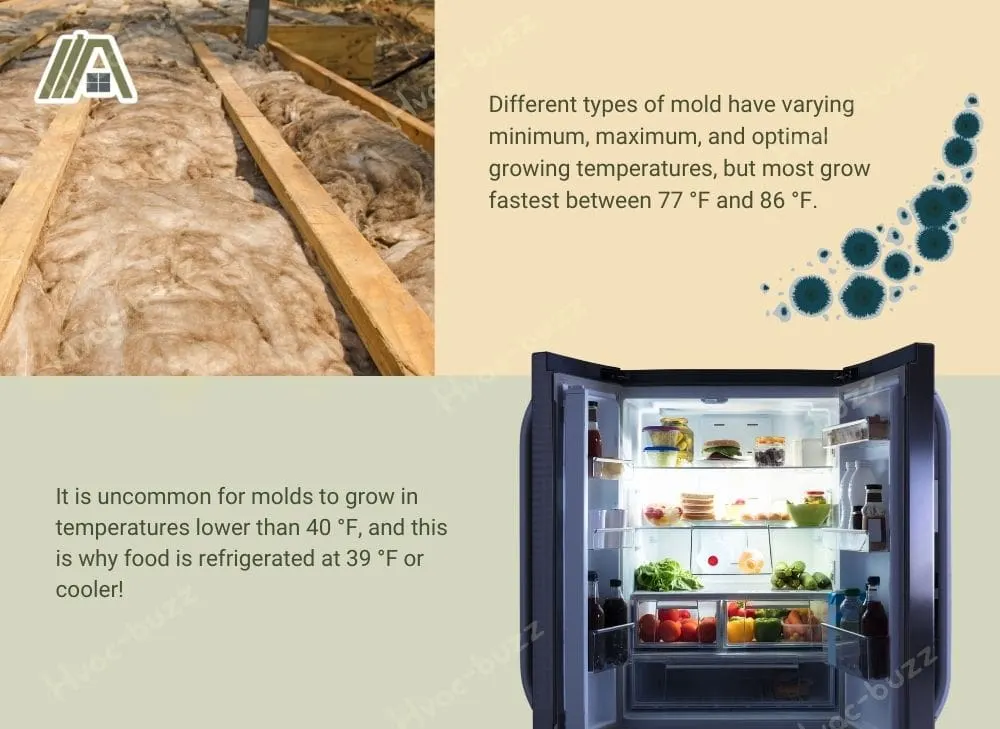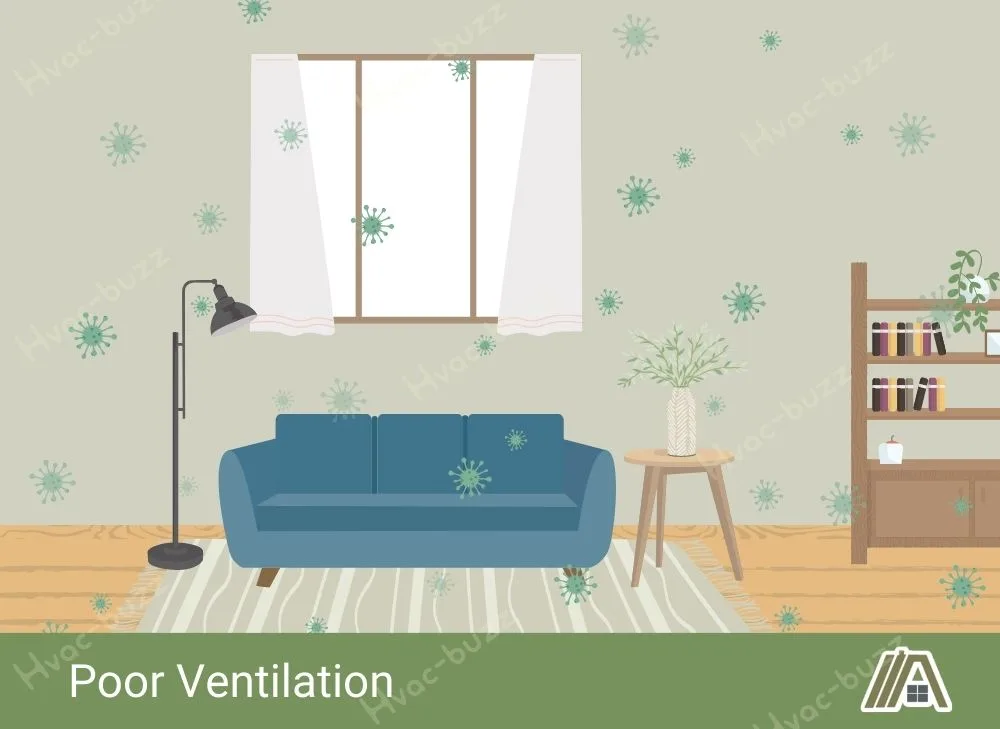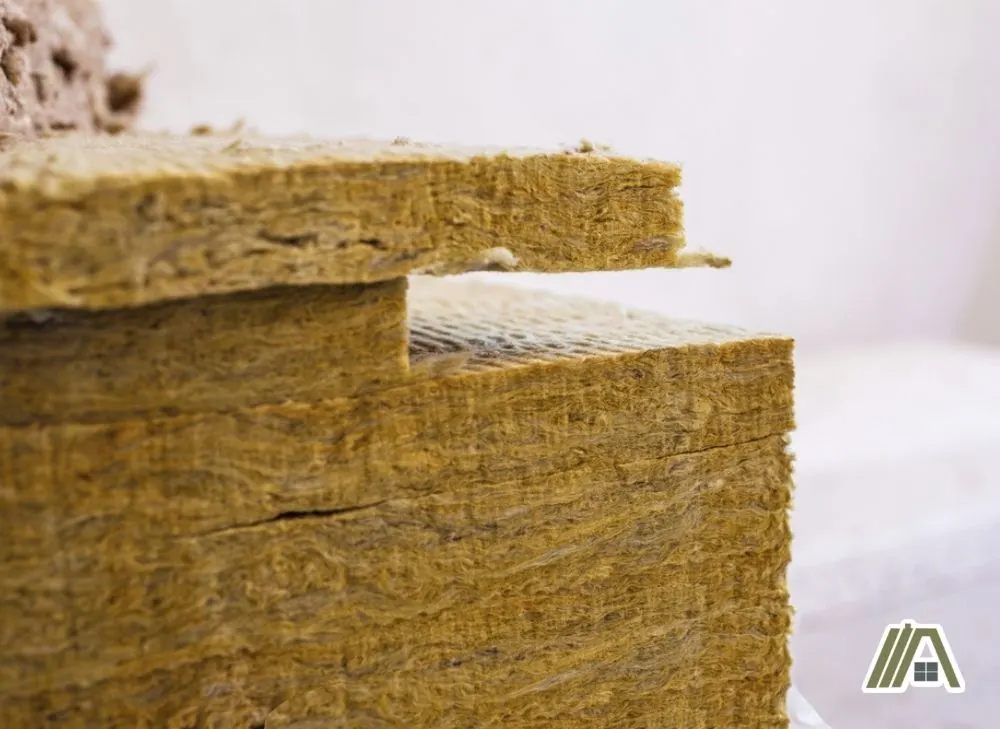Insulation can become wet during the construction process or due to water leaks in your home. This can lead to a variety of problems, including structural damage, decreased effectiveness, and mold growth.
The presence of water, as we know, is crucial to the appearance of mold, but it’s not the only requirement. These other requirements contribute to the growth of mold and how long it takes to appear.

Mold can start to develop in as little as 24 to 48 hours after insulation has become wet. Conditions such as temperature, food sources, and ventilation can increase the speed at which mold grows in insulation.
What Is Required for Mold Growth?
Mold Spores
Mold doesn’t just appear out of nowhere, although it may seem like that due to the microscopic nature of individual mold spores.
These little particles that can usually only be seen under magnification are released by mold and travel to create new mold growths.

Mold spores can enter your home in a variety of ways. The simplest way is through the air. Mold spores can become airborne and waft into your home through doors, windows, and other openings.
Some mold spores are sticky and can adhere to people, pets, and belongings. When you enter the house, you may dislodge the spores from your body and leave them on surfaces in your home.
Mold spores can most likely be found in just about any home, but the quantity and type of mold may differ.
It is not dangerous to have some mold in your home as it is natural for it to be tracked in through daily living, but under the right conditions, the spores can grow into harmful colonies.
Moisture
The key to mold growth is moisture. Mold uses water as a method of transportation, and it needs the oxygen in water to process nutrients.
In moist environments, such as bathrooms, basements, and windows, mold growth is common.
In addition, drying out an area that contains mold spores is not enough to prevent future problems. Mold spores don’t die when they are dried out; they just become temporarily inactive. Some spores can lay dormant for years, waiting for the proper environment to present itself again.
Heat
Different types of mold have varying minimum, maximum, and optimal growing temperatures, but most grow fastest between 77 °F and 86 °F. It is uncommon for molds to grow in temperatures lower than 40 °F, and this is why food is refrigerated at 39 °F or cooler!

Unfortunately for us, many parts of our home reach the ideal temperature range for mold growth. Although homes are typically kept around 68 °F to 74 °F, warmer seasons may lead to higher temperatures, especially in homes without AC.
Ducts can also increase the temperature inside the walls of your home, and places such as bathrooms and kitchens often reach higher temperatures than the rest of your home for obvious reasons.
Organic Matter (Food Source)
Just like any living thing, mold needs a food source in order to continue growing. Molds produce chemicals to decompose organic matter for food, similar to how mushrooms do.
The food sources of mold are not limited to what we would consider food. Sure, mold can grow on things such as the bread and vegetables in your kitchen, but it can also feed on organic materials, such as paper, leather, and cloth.
For example, black mold feeds on cellulose that can be found in building materials like drywall and lumber.
Sometimes, there is enough organic matter in the moisture itself to support mold growth. The water that carried mold into your home can also carry other organic materials such as decaying plant and animal matter.
How Wet Insulation Meets These Requirements
Mold spores can be introduced to insulation in a few different ways:
- Before installation, dormant spores may have landed on the insulation.
- Water leaks from faulty plumbing, storms, and flooding can carry mold spores.
- If pests find a way into your walls, they can carry mold spores on their bodies.
If mold is going to grow in your home, it’ll most likely happen in areas of poor ventilation. The spores can land on a surface and grow there without being disturbed.

Insulation is installed in between the walls of your home, where ventilation is not needed. The stagnant air allows mold spores to find a home within the insulation.
Since most mold spores are introduced to the insulation along with water, this provides the necessary moisture for the mold to continue growing.
Moisture, in this case, refers to water. Other fluids, such as oils, do not support mold growth because they do not carry the same amount of oxygen and nutrients.
Insulation can also be located in places where heat gathers. The purpose of insulation is to prevent the diffusion of heat, so heat often builds up around one side of the material.
The temperature of the insulation differs depending on its location within the home. For example, areas that are closer to HVAC systems experience greater temperature differences.
Finally, mold can easily find a food source in wet insulation.
Sometimes, organic matter in the water itself provides the food source for mold, as discussed earlier. Other times, mold feeds on the insulation itself. Mold can break down insulation made of cellulose, cotton, cork, and other organic materials.
How Quickly Mold Can Grow on Insulation
Mold can start to develop in as little as 24 to 48 hours after a material has become wet. Ideal conditions—a warm, humid environment—will shorten the time frame.
Some types of insulation will grow mold faster than others. For example, cellulose insulation provides plenty of nutrients for mold to grow quickly.
On the other hand, fiberglass insulation is naturally mold-resistant since it cannot be eaten by mold. Some companies add a protective layer of fungicide to further prevent mold growth.
Another option is stone wool insulation, which dries quickly and does not promote mold growth since it is made of inorganic materials.

Despite the precautions added to some of these insulation options, mold is hard to completely prevent after moisture has been introduced to insulation. It may take longer for fiberglass and stone wool insulation to grow mold, but it is certainly not impossible.
You also have to consider how long insulation has been wet for before you realize. It is not always easy to tell if insulation is wet.
Can You Remove Mold From Insulation?
Wet insulation can be dried and reused in some scenarios. However, removing mold from insulation is a difficult task. Even if you remove all the visible mold, microscopic spores may have already traveled deeper into the insulation.
As previously stated, when mold spores dry out, they don’t die. They simply remain inactive until the right environment of heat and moisture presents itself. It is, therefore, necessary to remove all the spores in order to prevent a recurrence of mold in the future.
It is easier to remove mold from non-porous insulation, like high-density closed-cell insulation, as the mold is most likely limited to just the surface of the insulation. Bleach is an effective cleaning agent for removing mold in such cases.
More porous materials, like fiberglass, will not be so simple to clean. You are not able to scrub the surface of fluffy insulation, and mold is more easily able to travel deeper into the insulation.
In cases such as this, removing the entire piece of wet, moldy insulation is a better option. This prevents the mold from spreading farther into the rest of your home. So, even though you’ll need to buy a bit of new insulation now, it will save you from having to replace more of it in the future.
Sources
https://www.bustmold.com/resources/about-mold/does-mold-die-when-it-dries-out/
https://www.fema.gov/pdf/rebuild/recover/fema_mold_brochure_english.pdf
